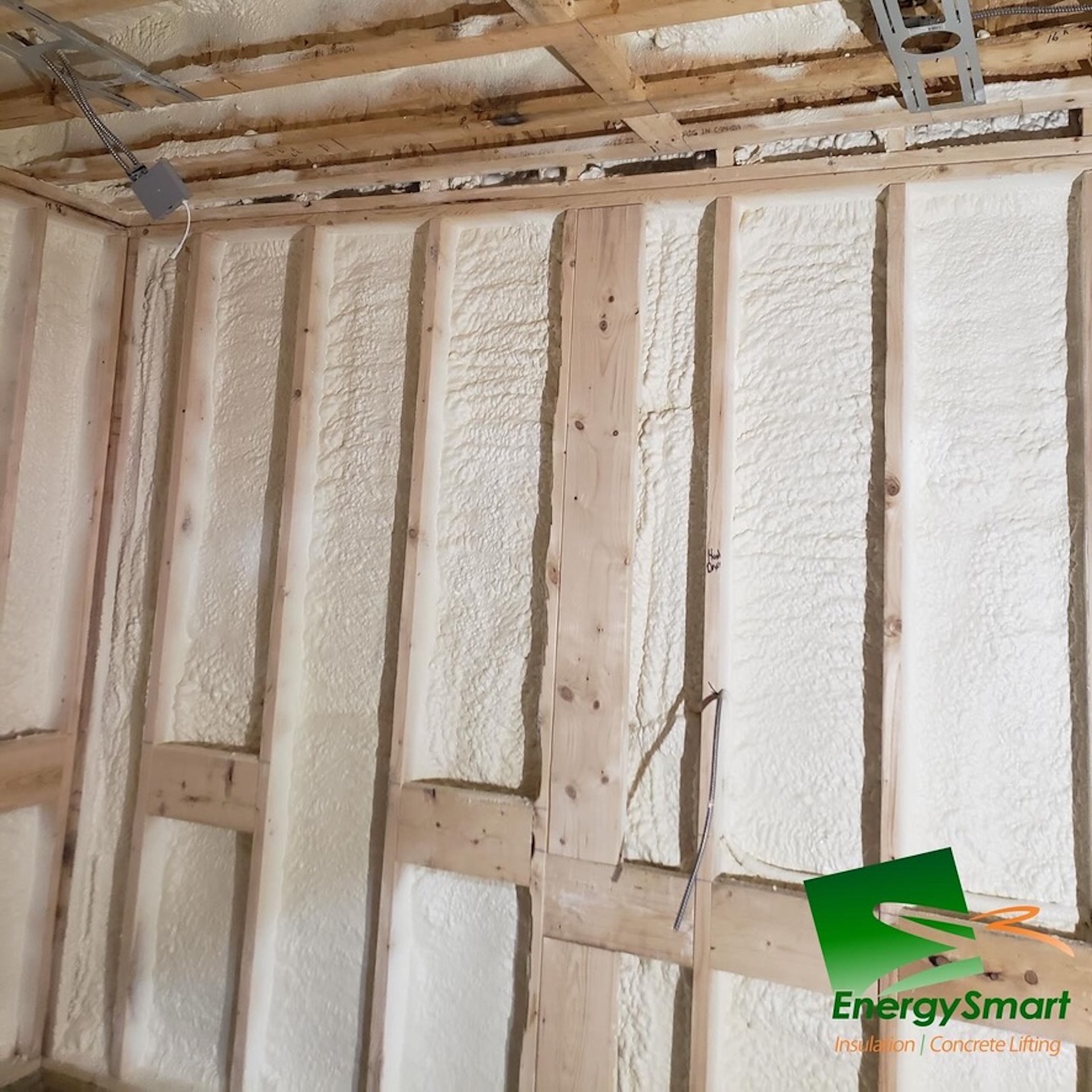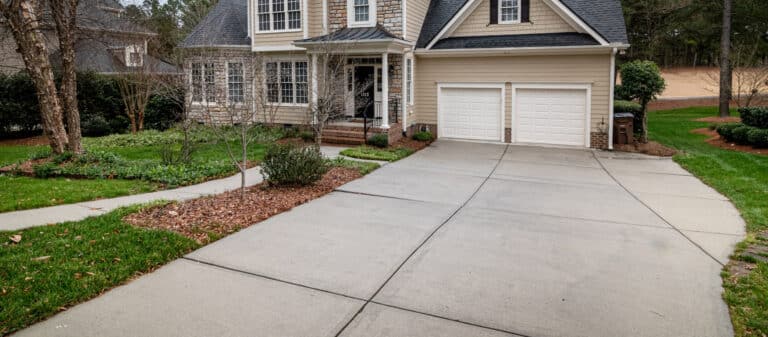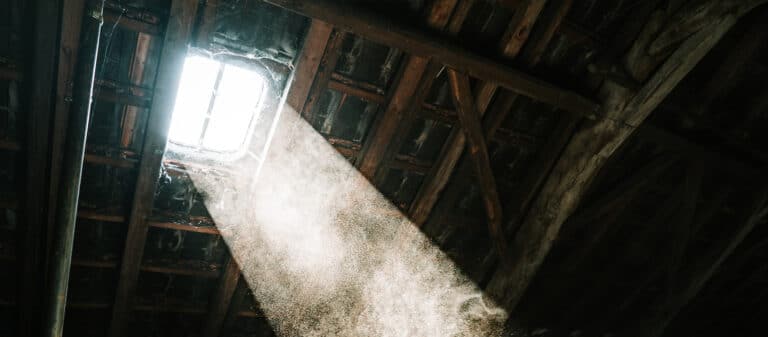If you own an older home in Northeast Pennsylvania, you’re probably used to the lack of privacy that your thin and uninsulated walls provide.
While we don’t think of sound insulation as an essential amenity, once you experience the comfort of soundproof walls, you’ll never want to go back–if you have a newborn or are just a light sleeper, you’ll know what we mean.
Even a minor improvement in your interior insulation can provide many soundproofing benefits, whether you choose to invest in a full soundproofing solution or not. Whether you want to soundproof your room or increase your sound insulation completely, this guide will show you where to get started.
Understanding Sound Transmission
Before diving into soundproofing strategies, it’s crucial to understand how sound travels, as it will help you decide what types of sound you want to eliminate. Generally, sound transmission occurs in two ways:
- Airborne Noise: Sound that travels through the air, such as conversations or music, that can violate your privacy. Generally, soundproofing materials, such as acoustic panels, will be required to eliminate airborne noise completely.
- Structure-borne Noise: Sound that travels through solid materials like floors, ceilings, and walls, such as creaking wooden floors or vibrations from appliances. Common insulation, such as spray foam, can help diminish this noise, especially if installed between wall cavities.
Understanding this information, you can choose a soundproofing solution that meets your goals and budget.
5 Benefits of Sound Insulation
We may not think of sound insulation as anything more than a superficial amenity that we can boast about in our new homes, but sound insulation can actually provide several benefits that drastically improve your quality of life.
- Enhanced Privacy: Sound insulation can improve privacy between rooms, which is very important for homeowners in smaller homes.
- Improved Sleep: The list of benefits of sleep is too much to list. But suffice it to say that reducing the amount of noise in your home will lead to improved sleep.
- Increased Home Value: Homes with effective soundproofing are attractive to buyers, delivering a sizable return on investment (ROI) when it comes time to sell.
- Better Focus: As a huge portion of the workforce transfers to remote work, limiting noise in your workplace (home) can improve your focus and productivity.
- Comfort and Peace of Mind: Less noise means a more comfortable living environment, which contributes to overall well-being.
Does Home Insulation Provide Adequate Soundproofing?
You want to soundproof your home, but you may be wondering if regular insulation is sufficient.
Common forms of insulation, such as spray foam and fiberglass batts, can reduce noise transmission between rooms. However, the amount of noise reduction will depend significantly on the thickness of the insulation barrier and where it is installed.
In many cases, homeowners can save money by adding additional insulation to their existing insulation, thus also reducing energy bills and adding other benefits.
Keep in mind that closed-cell foam and thick fiberglass insulation will provide the most soundproofing benefits. Likewise, we recommend professional assistance, as failing to ventilate your insulation can lead to moisture issues.
Additional Materials that Provide Sound Insulation
For additional soundproofing, there are several materials you can purchase to reduce noise transmission in your home.
1. Acoustic Panels
Acoustic panels are typically made of foam, fabric, or other sound-absorbing materials that can be installed onto walls and ceilings. They are the most common and easy form of soundproofing for homeowners to install. While they don’t fully block noise, they help to absorb it and improve sound quality within a space.
2. Mass Loaded Vinyl (MLV)
Mass Loaded Vinyl is a dense, flexible material that helps block airborne noise. It is commonly used in walls, ceilings, and floors to prevent sound from passing through. MLV is particularly effective in apartments or homes with thin walls, as it adds mass and density, both key factors in soundproofing.
3. Acoustic Caulk
Acoustic caulk is a flexible sealant used to fill gaps and cracks in walls, floors, and ceilings. While minimal, this caulk can help reduce sound transmission from outside your home or between walls.
4. Weatherstripping
Weatherstripping is traditionally used to prevent drafts underneath doors and windows, but it can also improve sound insulation
Practical Tips for Soundproofing Specific Areas
Targeting specific areas of your home to insulate can provide the most efficient soundproofing without breaking the bank.
1. Walls
When soundproofing walls, the goal is to add mass using thick insulation materials and dampen vibrations. If you’re building a new wall, consider using soundproof drywall or MLV between layers of drywall. However, adding new insulation can be sufficient to reduce noise transmission between walls.
Tip: Don’t forget to seal gaps around outlets, light switches, and cracks with acoustic caulk.
2. Floors
To reduce impact noise, install soundproof underlayment beneath flooring materials such as hardwood, tile, or laminate. Carpets and thick rugs also help absorb sound and reduce footstep noise.
Tip: Use felt pads under furniture legs to reduce vibrations and noise caused by movement.
3. Windows
Windows are one of the weakest points in a home’s soundproofing system. Unfortunately, many older homes in NEPA still use single-pane windows, which are very inefficient. Consider installing double-glazed windows, which are designed to reduce sound transmission. Add heavy curtains to block external noise.
Tip: Apply weatherstripping around window frames to seal gaps where sound might enter.
4. Doors
Most interior doors are hollow and offer little sound resistance. Replacing them with solid-core doors can significantly reduce sound transmission. Adding a door sweep and using weatherstripping can also help seal the gaps around doors.
Tip: For a budget-friendly option, use draft stoppers or thick rugs under doors to block noise from coming through the bottom.
5. Ceilings
To reduce sound from an upper floor, consider installing a drop ceiling with acoustic tiles or just adding more insulation.
Tip: Consider using resilient channels: metal strips that create a gap between drywall and the frame, allowing for better sound absorption.
Common Mistakes to Avoid
Don’t waste your budget or sacrifice your comfort by making these common soundproofing mistakes.
- Overlooking Gaps and Cracks: Even small gaps around windows, doors, and outlets can allow significant noise leakage. Be diligent about sealing these with acoustic caulk or weatherstripping.
- Relying Solely on Foam Panels: While foam acoustic panels are excellent for reducing echo, they do not block sound transmission between rooms. For full soundproofing, you’ll need materials like MLV or soundproof drywall.
- Not Considering Structure-borne Noise: While airborne noise can be reduced with insulation and sound-blocking materials, impact noise requires specific attention. Use rugs, underlayment, or other materials that cushion and absorb vibrations.
By addressing noise at its root, you can properly soundproof your home to maximize your budget and comfort.
 FAQs
FAQs
What is the difference between soundproofing and sound absorption?
Soundproofing aims to prevent noise from entering or leaving a space. It focuses on blocking sound transmission through walls, doors, floors, or ceilings. Sound absorption, on the other hand, reduces noise within a room by controlling echoes and reverberation, but it does not block external sounds.
Can I soundproof an existing room without doing major construction?
Yes, there are several methods to soundproof a room without major renovations. You can install acoustic panels, use mass loaded vinyl (MLV) on walls, seal gaps with acoustic caulk, add weatherstripping around windows and doors, and lay down thick rugs or carpets to absorb sound.
How effective is insulation at soundproofing a room?
Insulation, particularly fiberglass and closed-cell foam, is effective at reducing airborne noise but may not be as effective at blocking impact noise like footsteps or vibrations. It is often used in combination with other soundproofing materials for better results.










